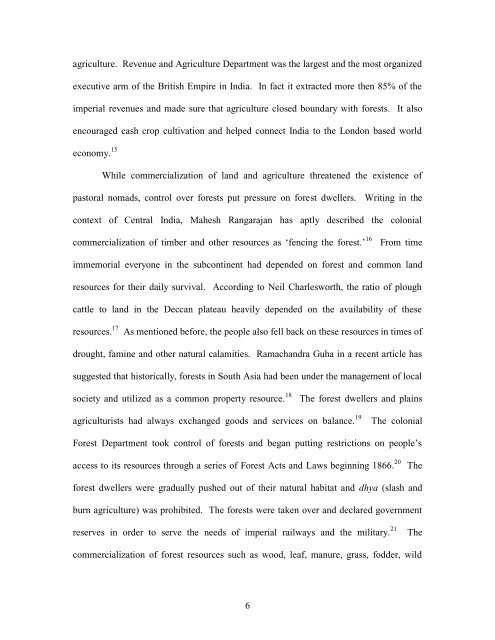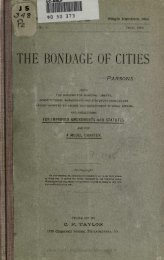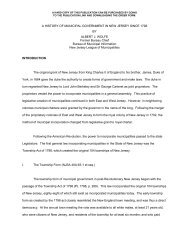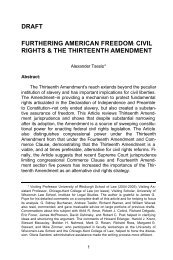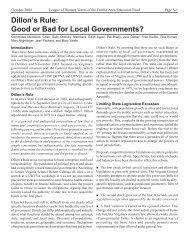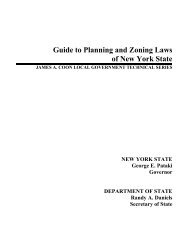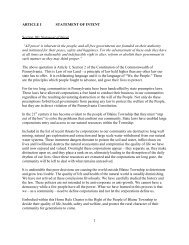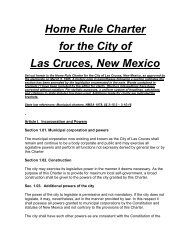The British Empire and Famine in Late 19th Century Central India
The British Empire and Famine in Late 19th Century Central India
The British Empire and Famine in Late 19th Century Central India
You also want an ePaper? Increase the reach of your titles
YUMPU automatically turns print PDFs into web optimized ePapers that Google loves.
agriculture. Revenue <strong>and</strong> Agriculture Department was the largest <strong>and</strong> the most organized<br />
executive arm of the <strong>British</strong> <strong>Empire</strong> <strong>in</strong> <strong>India</strong>. In fact it extracted more then 85% of the<br />
imperial revenues <strong>and</strong> made sure that agriculture closed boundary with forests. It also<br />
encouraged cash crop cultivation <strong>and</strong> helped connect <strong>India</strong> to the London based world<br />
economy. 15<br />
While commercialization of l<strong>and</strong> <strong>and</strong> agriculture threatened the existence of<br />
pastoral nomads, control over forests put pressure on forest dwellers. Writ<strong>in</strong>g <strong>in</strong> the<br />
context of <strong>Central</strong> <strong>India</strong>, Mahesh Rangarajan has aptly described the colonial<br />
commercialization of timber <strong>and</strong> other resources as „fenc<strong>in</strong>g the forest.‟ 16<br />
From time<br />
immemorial everyone <strong>in</strong> the subcont<strong>in</strong>ent had depended on forest <strong>and</strong> common l<strong>and</strong><br />
resources for their daily survival. Accord<strong>in</strong>g to Neil Charlesworth, the ratio of plough<br />
cattle to l<strong>and</strong> <strong>in</strong> the Deccan plateau heavily depended on the availability of these<br />
resources. 17<br />
As mentioned before, the people also fell back on these resources <strong>in</strong> times of<br />
drought, fam<strong>in</strong>e <strong>and</strong> other natural calamities. Ramach<strong>and</strong>ra Guha <strong>in</strong> a recent article has<br />
suggested that historically, forests <strong>in</strong> South Asia had been under the management of local<br />
society <strong>and</strong> utilized as a common property resource. 18<br />
<strong>The</strong> forest dwellers <strong>and</strong> pla<strong>in</strong>s<br />
agriculturists had always exchanged goods <strong>and</strong> services on balance. 19<br />
<strong>The</strong> colonial<br />
Forest Department took control of forests <strong>and</strong> began putt<strong>in</strong>g restrictions on people‟s<br />
access to its resources through a series of Forest Acts <strong>and</strong> Laws beg<strong>in</strong>n<strong>in</strong>g 1866. 20<br />
<strong>The</strong><br />
forest dwellers were gradually pushed out of their natural habitat <strong>and</strong> dhya (slash <strong>and</strong><br />
burn agriculture) was prohibited. <strong>The</strong> forests were taken over <strong>and</strong> declared government<br />
reserves <strong>in</strong> order to serve the needs of imperial railways <strong>and</strong> the military. 21<br />
<strong>The</strong><br />
commercialization of forest resources such as wood, leaf, manure, grass, fodder, wild<br />
6


